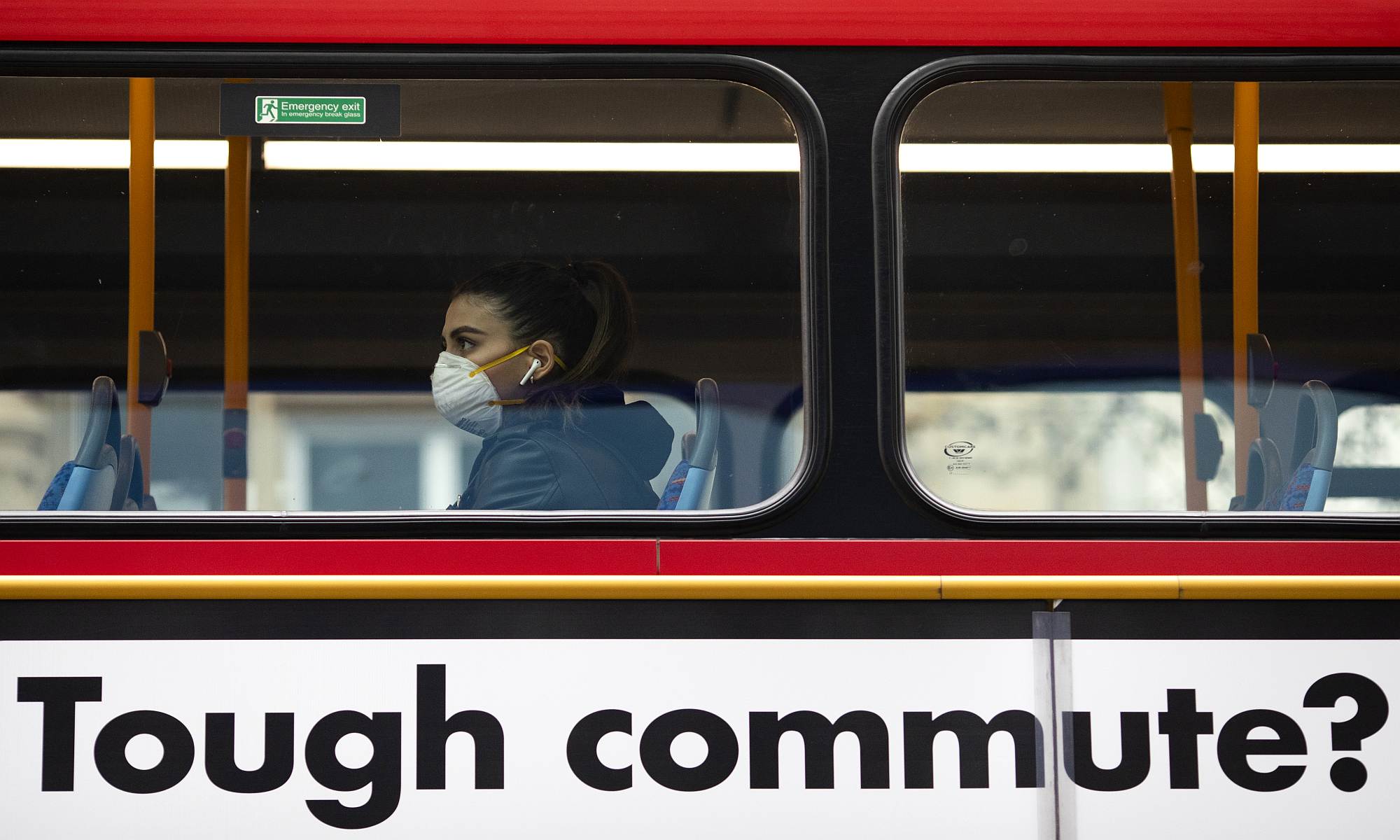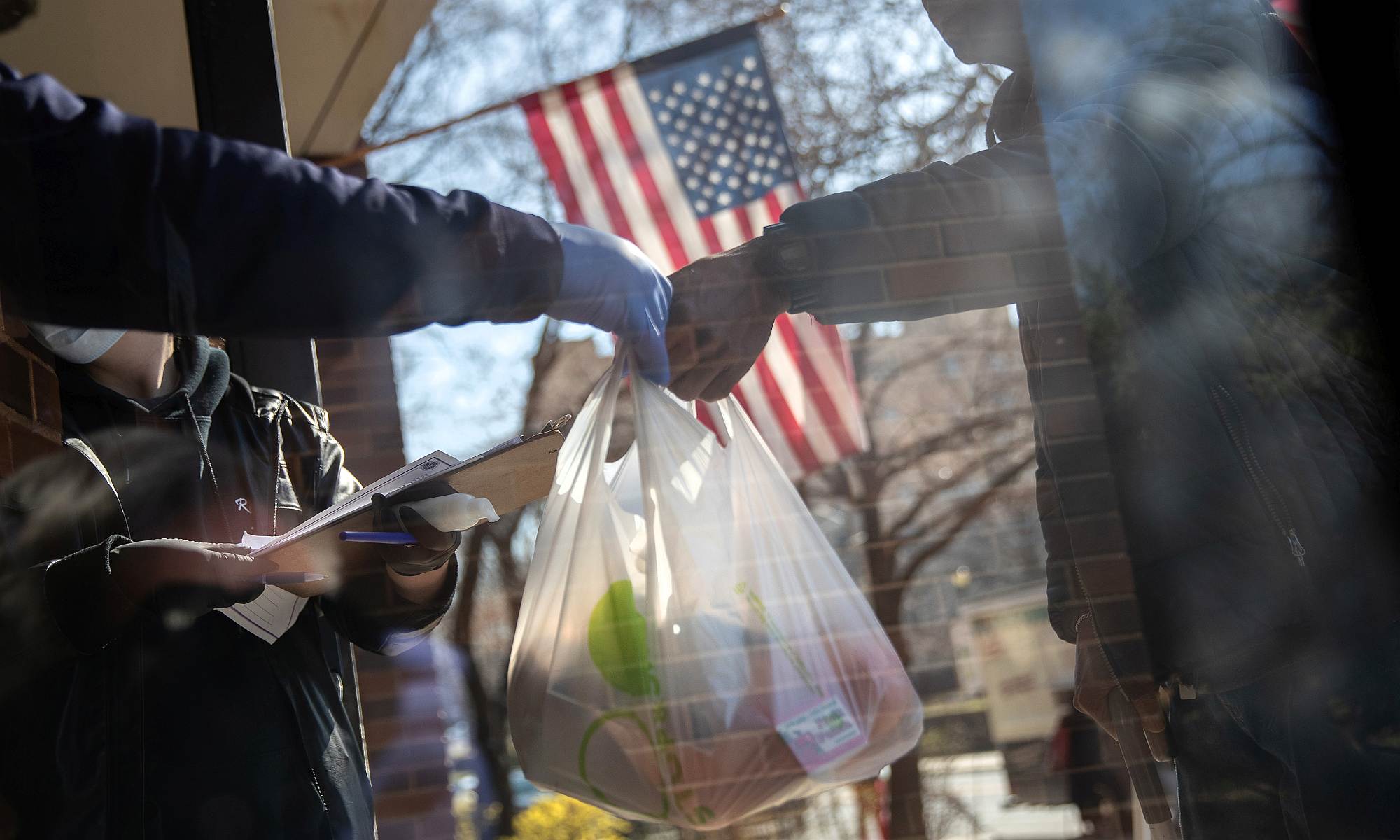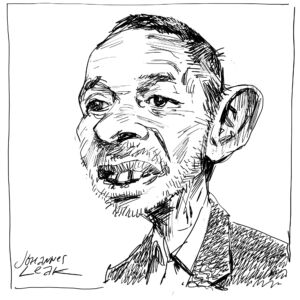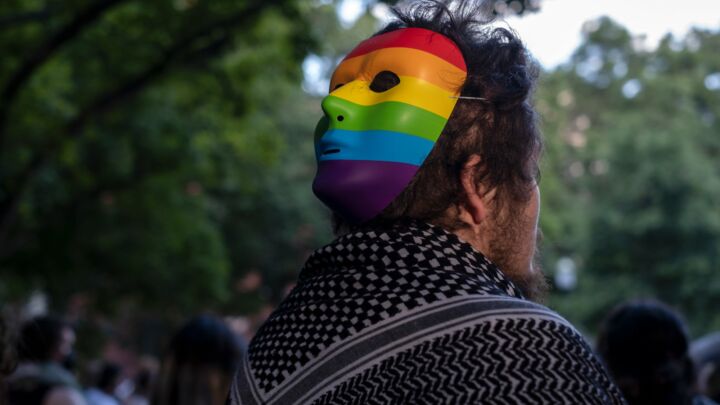
Long-read
A disaster without precedent
Covid-19 is a huge blow to humanity, but it need not break the human spirit.
Want to read spiked ad-free? Become a spiked supporter.
Covid-19 is a disaster without precedent. Not primarily in terms of the disease itself, but in terms of how we have responded to it.
The impact of Covid-19 on people’s lives and on economic, social and global relations, both now and in the future, is likely to be more far-reaching than any other previous public-health crisis. Not even during the First World War or the Second World War did governments feel the need to close schools. The application of emergency measures in response to Covid-19 is unparalleled in peacetime.
The reason why Covid-19 is a disaster without precedent is not because of the scale of physical losses. At the time of writing, the global number of fatalities from Covid-19 is just over 10,000. Around 260,000 people have been infected. These are very large numbers. But compared to some flu pandemics, the physical impact so far has been relatively modest. The 1918 flu epidemic was the most destructive global epidemic of modern times, leading to around 40million deaths. In 1968, the so-called Hong Kong flu (H3N2 virus) killed more than one million people. There were around 80,000 deaths in the UK alone.
No, the reason why the global impact of Covid-19 is so huge is because of the way that governments, international organisations and communities have responded to it. Taking a longer view of catastrophes can help us to put the current crisis in historical perspective. Back in 1918, there was no global media or social media that would bring every death and every incident to the attention of people around the world. In many parts of the world people were distracted by the events of the First World War and by the economic and social struggle to make ends meet. Unlike today, the pressure on governments to be seen to be doing something was relatively modest. Throughout the outbreak of 1918, US President Woodrow Wilson faced minimal pressure to respond to it. As pointed out by John M Barry, author of The Great Influenza: The Story of the Deadliest Pandemic in History: ‘Wilson never issued a statement of any kind on the outbreak. He never said a word publicly.’
What history teaches us is that the scale of destruction unleashed by a pandemic does not explain how that pandemic is viewed and experienced by people and by society. How a disaster is experienced, and how hard it impacts on society, is also a consequence of the way the community responds to it. In the end, it is how a society responds to a disaster like a flu epidemic that determines what the long-term legacy of the disaster will be.

Back in 1932, in one of the earliest sociological discussions of the meaning of disaster, Lowell Juilliard Carr argued that ‘how a community reacts to disaster is probably determined by its culture, its morale, its leadership, and by the speed, scope, complexity and violence of the catastrophe itself’. Carr recognised that the character of the disaster and the scale of destruction of course played a crucial role in shaping the public’s response to it. But he insisted that this response was also mediated through the system of meaning, norms, institutions and leadership in the community itself.
The key point made by Carr is that a disaster is defined by human beings, not by nature. He wrote that ‘not every windstorm, earth tremor, or rush of water is a catastrophe’. If there are no injuries or deaths or other serious losses, then ‘there is no disaster’, Carr argued. This association of disaster with the destruction of human lives and economic activity was itself shaped by the modernist imagination. Author Michael Kemp argues that in the Middle Ages, ‘Solar eclipses and comets were seen as catastrophes, because they were interpreted as signs of divine anger against human sins, as were earthquakes and volcanic eruptions’. No one died and no one was hurt, but back then these things were nonetheless perceived as catastrophes. It was not so much the intensity of human suffering that mattered, but the powerful signals allegedly being sent by the major act of physical disruption.
21st-century pandemics
The way a community responds to a serious threat like a pandemic is mediated through the community’s perception of the threat, its sense of existential security, and its ability to give meaning to unpredictable experiences. All of these responses are influenced by society’s broader cultural script on risk and uncertainty.
A cultural script provides citizens with ideas about how dangerous threats are, and about how risky something like a pandemic is in relation to our daily lives. Cultural scripts influence people’s perception of their own vulnerability and of their capacity for resilience. They communicate rules about how people ought to feel in the face of danger. Of course, individuals interpret these rules according to their own circumstances and temperament. It is useful to regard a cultural script as being like a pair of spectacles through which people visualise and interpret a disaster such as a viral pandemic.
I would argue that the key features of the cultural script influencing our unprecedented response to Covid-19 today are as follows:
The shift from resilience to vulnerability
From my research into how fear works, I have drawn the conclusion that the most important influence on fear today is the dramatic redefinition of personhood, of what it means to be a person. Different cultures and different times have contrasting views of personhood. These differences touch on questions such as whether a person is seen as an agent in charge of his or her destiny, or is viewed as incapable of exercising autonomy. The meaning of personhood also touches on the question of how much pain and distress society expects a person to put up with. Should an individual be expected to take risks, or should he or she remain within the confines of secure and safe spaces?
The most important change in the way individuals are viewed in the 21st century is the shift from a presumption of resilience towards defining individuals by their vulnerability. To illustrate this shift, I have looked into the differing cultural scripts that informed the response to floods in Britain in 1952/1953 and in 2000. These very different responses highlight the different ways in which disaster itself is processed by communities depending on their view of themselves and the broader cultural script that impacts on us all.
Destructive floods in 1952 and 1953, which led to serious loss of life, were perceived through a very different cultural frame to the far less destructive floods of 2000. In the 1950s, the cultural script contained an expectation that communities and individuals would be able to cope with calamities that they encountered. Indeed, people were encouraged to interpret disaster as a test, as a challenge to be overcome.
By contrast, in 2000, floods were represented as uniquely threatening events that were likely to overwhelm the coping capacity of individuals. This difference in emphasis can be seen in the following excerpts. In 1953, a report for The Times on the queen’s visit to flood-afflicted areas clearly communicated the officially sanctioned view that people would respond to the flood with ‘courage and fortitude’. It was reported that the queen was ‘impressed by the stoic and heroic manner of the people who had obviously been through a bad and trying time, suffering heavy losses’ (The Times, 4 February 1953).
In contrast, newspapers in 2000 constantly sent the message that flood victims would suffer serious psychological damage. According to one account in the Guardian, ‘up to 20 per cent of natural-disaster victims may suffer from post-traumatic stress disorder’. The report said that many would feel depressed and isolated, losing their sense of place and attachment or ‘developing obsessive anxieties as a result of the ordeal’. Since 2000, floods and other distressing experiences are increasingly framed through the language of mental health.
Back in the 1950s, the term ‘vulnerable’ was never used to describe victims of floods, or any other disasters. Nor were those who faced the deadly Hong Kong flu epidemic of 1968 referred to as ‘vulnerable’. The invention of vulnerability as a fundamental human characteristic started in the early 1980s. In the subsequent 40 years, ‘vulnerability’ has become a taken-for-granted category that is applied to more and more people.
Today, vulnerability is one of the defining features of personhood. As a result, the cultural script that now influences everyday life tends to call into question the capacity of people to deal with adverse experiences. Once vulnerability is seen to trump human resilience, people’s ability to deal with adversity can end up being compromised. More importantly, the current exaltation of vulnerability can inflate the sense of helplessness that many of us feel when confronted with emergencies.
The psychologisation of everyday life
The emergence of vulnerability as the defining feature of the human condition has fuelled a new trend for psychologising the problems of everyday life and existence. Health problems are proliferating these days. A growing number of conditions that were previously regarded as normal are now given a mental-health diagnosis. Shyness, stress, low self-esteem – these have all been rebranded as medical pathologies.
The trend towards medicalising everyday life is particularly pronounced in the realm of childhood. From a very early age, children are encouraged to explain their problems through the language of psychology. Children are unwittingly encouraged to perceive of themselves as fragile and vulnerable and in need of professional support. We can be sure that the Covid-19 pandemic will not only be experienced as a threat to physical health, but as a mental-health crisis, too.
A heightened sense of existential insecurity
It is not possible to understand the way governments have responded to Covid-19 without considering the signals that contemporary culture sends about human existence more broadly.
The idea that humanity is confronted by existential crises, pretty much all the time, has become a normal part of life today. The term ‘human extinction’ is used casually in everyday conversation. Consider the Guardian. In 1988, the word extinction appeared 93 times in its pages. In 2007 that had increased to 207. Last year it appeared 1,391 times, no doubt influenced by the rise of Extinction Rebellion and its belief that human existence is under constant threat from itself.
One disturbing symptom of society’s inflated sense of insecurity is the tendency to be fatalistic about the future. Very often, discussions about pandemics are held in the language of inevitability. Time and again we are warned that the ‘question is not if, but when’ a big catastrophe will occur. The big catastrophe they refer back to tends to be the 1918 flu pandemic, which is now depicted as a normal experience in human history, when in truth it was a rare event.
In relation to flu pandemics, worst-case thinking took a gigantic leap forward in the 1970s. For it was then that the flu was transformed from a health problem into a global threat to human existence. The idea that devastating flu outbreaks occur every decade or so really started to take off. The sociologist Robert Wuthnow describes how on 15 March 1976, the then American health, education and welfare secretary, David Matthews, sent a memo to officials that said: ‘There is evidence that there will be a major flu epidemic this coming Fall. The indication is that we will see a return of the 1918 flu virus that is the most virulent form of flu.’ He added that, in 1918, half-a-million Americans died, and he projected that this virus would kill ‘one million Americans in 1976’. Of course that didn’t happen.
Since 1976, worst-case thinking has become institutionalised. The future has become a canvas on which supposedly responsible commentators project their terrifying images and alarmist predictions. ‘Superbugs are on track to kill 10million people by 2050 if things don’t change — fast’, insisted a fairly typical piece on the issue of ‘superbugs’. The rhetoric of the worst-case ideology is both precise and visual. The superbugs are ‘on track’ – they are getting closer and closer to the finishing line, and unless they are stopped, 10million will die. Such alarmist predictions on ‘superbugs’ were reasonably restrained in comparison with the claim made in a report by aid organisation DARA International that 100million will die by 2030 ‘if the world fails to act on climate change’. And that figure is positively modest compared to the 600million children who supposedly ‘face death, diseases and malnutrition by 2040 as water resources evaporate’.
The alarmist reports on 1918-like pandemics and global extinction have created a cultural context in which Covid-19 can be interpreted as the concluding chapter of a real-life disaster film. Once this dystopian view of the future enters society’s DNA, governments can find it difficult to adopt measures that are proportionate to the threat that really faces our communities.
The need to cultivate courage
History shows that moral vision provides communities with important resources for coping with adversity. If people have a shared moral outlook on life, they are able to give meaning to experiences of adversity and deal with the threats that confront them and their families. Shared meaning is the necessary foundation for community solidarity — and community solidarity will be essential to dealing with the Covid-19 crisis.

Unfortunately, in the current era psychological values trump moral values. Children are taught the psychological values of self-esteem and emotional literacy. Historically, our view of personhood was based on the principles of morality and autonomy. There was a sense that people had a moral obligation to respond to threats in accordance with the virtues of wisdom, courage, moderation and justice. Courage in particular was valued not simply as a character trait but as a form of behaviour that focused on taking responsibility for the welfare of others. The expectation that people would respond to harm and danger with courage was integral to the entire vision of moral behaviour.
The classical virtue of courage was not about the self. It was rooted within ideas of responsibility, altruism and wisdom. It may seem like a terribly archaic and unrealistic aspiration, but society really needs to engage with these virtues that for so long fortified the human spirit against adversity. Covid-19 is a disaster for humanity, but it need not break the human spirit. History shows that a disaster like Covid-19 is also a test of humanity’s capacity to deal with adversity, and overcome it. That is a lesson we must teach ourselves and our young right now.
Frank Furedi is a sociologist and commentator. His book What’s Happened To The University?: A Sociological Exploration of its Infantilisation, is published by Routledge. (Buy this book from Amazon(UK).)
Pictures by: Getty Images.
Celebrate 25 years of spiked!
A media ecosystem dominated by a handful of billionaire owners, bad actors spreading disinformation online and the rich and powerful trying to stop us publishing stories. But we have you on our side. help to fund our journalism and those who choose All-access digital enjoy exclusive extras:
- Unlimited articles in our app and ad-free reading on all devices
- Exclusive newsletter and far fewer asks for support
- Full access to the Guardian Feast app
If you can, please support us on a monthly basis and make a big impact in support of open, independent journalism. Thank you.







Comments
Want to join the conversation?
Only spiked supporters and patrons, who donate regularly to us, can comment on our articles.